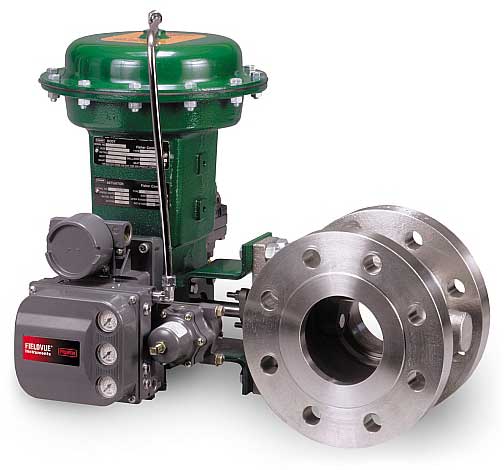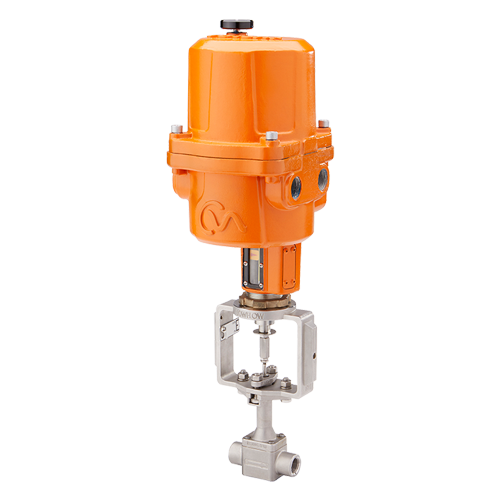Selecting the Right Control Valves: An Overview to Ideal System Efficiency
Selecting the Right Control Valves: An Overview to Ideal System Efficiency
Blog Article

Maximize Power Financial Savings and Convenience With Advanced Structure Automation Controls
In the realm of modern-day architecture and facility administration, the combination of sophisticated structure automation controls stands as an essential advancement. By utilizing the power of automation, buildings can adjust, respond, and develop in means that were once unbelievable.
Power Effectiveness Conveniences
Energy efficiency advantages can dramatically minimize energy consumption and functional expenses in buildings. Energy-efficient systems, such as innovative structure automation controls, can optimize the usage of sources like heating, air conditioning, and lights, leading to reduced power costs over time.
Additionally, enhanced energy efficiency can prolong the life-span of building tools and systems. By operating much more effectively, HVAC systems, light, and other structure components experience much less wear and tear, resulting in minimized maintenance and replacement prices. Additionally, energy-efficient structures frequently command higher residential property values and rental prices, providing long-lasting economic benefits to proprietors.
Furthermore, energy performance can improve owner comfort and performance. Properly controlled indoor atmospheres with optimum lighting and thermal problems create an even more positive and conducive work area, bring about improved worker contentment and efficiency. On the whole, the energy efficiency benefits related to innovative structure automation controls are multifaceted, encompassing expense financial savings, ecological stewardship, and owner well-being.
Enhanced Comfort Control
Enhancing comfort control in building settings needs an advanced combination of innovative automation systems for ideal occupant health. By utilizing advanced structure automation controls, centers can customize the indoor environment to satisfy the certain demands and choices of residents. control valves.
By including these advanced controls, structures can not only boost comfort however also boost energy effectiveness by maximizing system operations based on actual tenancy and use patterns. Inevitably, prioritizing occupant comfort through innovative automation systems leads to a more satisfying and much healthier interior atmosphere.
Functional Efficiency Improvements

Additionally, the execution of real-time monitoring and analytics devices allows structure drivers to identify power inadequacies and operational anomalies without delay. By continually monitoring power usage patterns and system efficiency metrics, modifications can be made in real-time to optimize power intake and make sure peak functional performance. control valves. Additionally, incorporating demand action strategies right into structure automation controls can additionally boost functional performance by dynamically readjusting energy use based upon grid problems and rates signals
Indoor Climate Optimization
Reliable interior environment optimization is a content fundamental aspect of building automation controls, guaranteeing passengers' convenience and wellness while maximizing power financial savings. By making use of advanced sensors and controls, constructing automation systems can continuously click over here change and check temperature, moisture degrees, air high quality, and air flow to produce an ideal interior atmosphere. Preserving comfy and constant conditions not only enhances occupant contentment yet likewise increases productivity and general health.
Indoor climate optimization also plays a critical duty in energy efficiency. By fine-tuning air flow, heating, and air conditioning systems based upon real-time information and occupancy patterns, constructing automation controls can significantly decrease power usage - control valves. Applying techniques such as demand-controlled air flow and thermal zoning can aid lessen power waste while guaranteeing that each location of the structure obtains the needed conditioning.

Sustainable Environment Production
Building automation controls not just maximize interior environment conditions for power performance and resident convenience however also lay the foundation for creating a lasting setting through strategic management of systems and resources. By integrating innovative building automation innovations, such as sensing units, actuators, and intelligent software, facilities directory can adjust and keep an eye on energy use in real-time to minimize waste and minimize their carbon impact. These systems allow predictive maintenance, recognizing prospective concerns before they escalate and maximizing devices efficiency to improve long life and effectiveness.
Moreover, lasting environment production extends past power administration to encompass water conservation, waste reduction, and indoor air top quality enhancement. Structure automation controls can regulate water usage, find leaks, and make sure proper waste disposal techniques, adding to total sustainability efforts. In addition, by managing and keeping an eye on air flow and filtration systems, these modern technologies enhance passenger wellness and efficiency while decreasing energy consumption related to heating and cooling procedures.
Conclusion
Finally, progressed building automation manages offer significant advantages in regards to power cost savings, comfort control, operational efficiency, interior environment optimization, and creating a sustainable atmosphere. By carrying out these controls, structures can achieve optimal performance while decreasing energy usage and enhancing passenger convenience. It appears that making use of innovative automation modern technology is essential in improving building performance and creating an extra lasting future.
Power performance advantages can dramatically reduce power intake and functional expenses in buildings. In general, the energy efficiency benefits associated with advanced building automation controls are multifaceted, including expense financial savings, environmental stewardship, and occupant health.
In addition, integrating need action techniques into structure automation controls can additionally boost functional performance by dynamically readjusting energy use based on grid conditions and pricing signals.
Structure automation manages not just enhance indoor environment problems for energy performance and resident convenience however also lay the foundation for developing a sustainable setting with strategic management of resources and systems.In verdict, advanced structure automation controls deal significant advantages in terms of power cost savings, convenience control, operational performance, interior environment optimization, and creating a lasting atmosphere.
Report this page